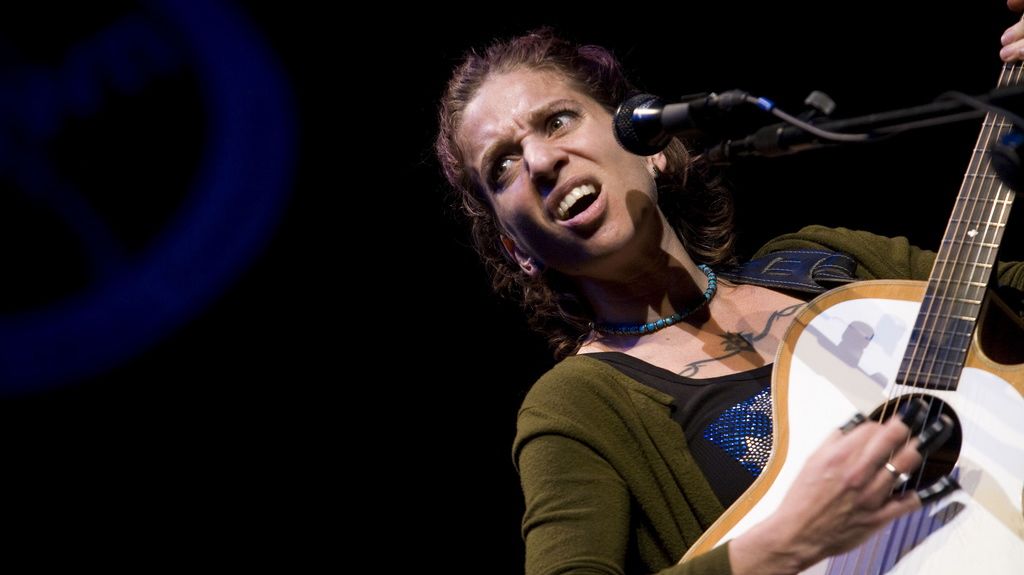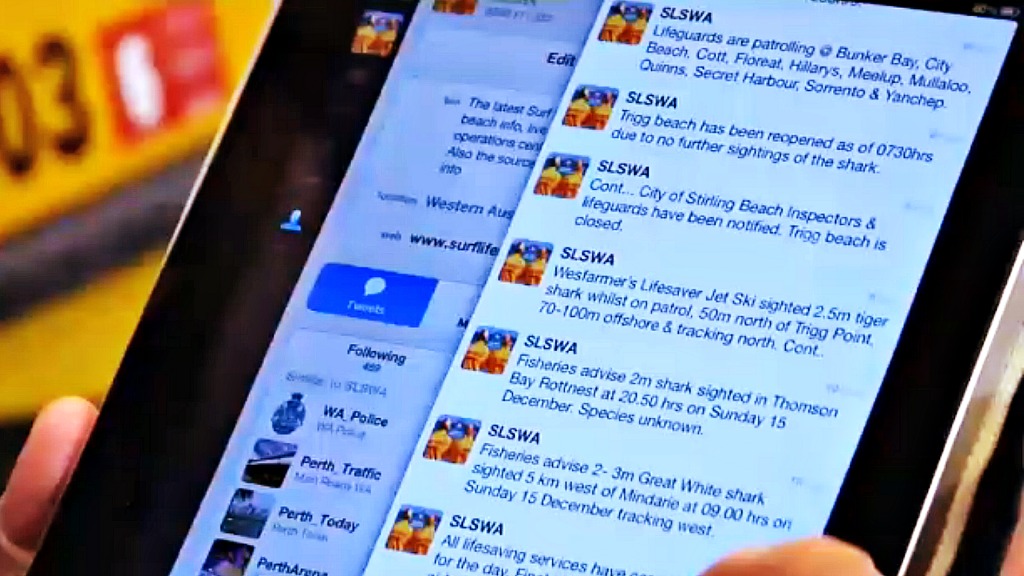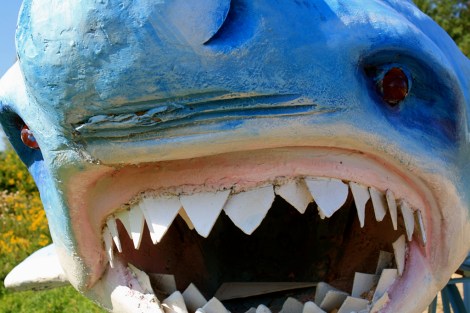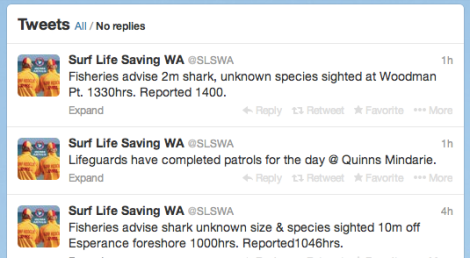In the olden days, by the time you read a shark warning in the newspaper, your leg could’ve been chomped off. So it makes sense that scientists in Western Australia — the No. 1 deadliest spot for a shark attack — have started using social media to warn swimmers way faster.
Surf Life Saving Western Australia is a Twitter feed that automatically updates when one of more than 300 tagged sharks swims within about half a mile of a beach. Ideally, the tweets would say something vaguely menacing but funny, like “It’s me, Jaws! I’m rapidly approaching Laguna Beach! GET OUT THA WAY.”
Instead, perhaps understandably, the messages simply include the shark’s breed, size, and approximate location:
Animals and plants tweeting is basically the best thing ever! But there’s a darker side of the story. Western Australia is so freaked out about its recent shark attacks — sharks have killed six people in the past two years — that it’s taking some drastic measures in addition to social media:
Ministers have just agreed to a controversial scheme allowing professional fishermen to kill sharks larger than three meters found in certain zones which are used by surfers and beach goers. And bait will be put out one kilometer off shore to attract and catch sharks during the summer.
Now, is killing sharks really necessary? Can’t this be solved with Instagram?





